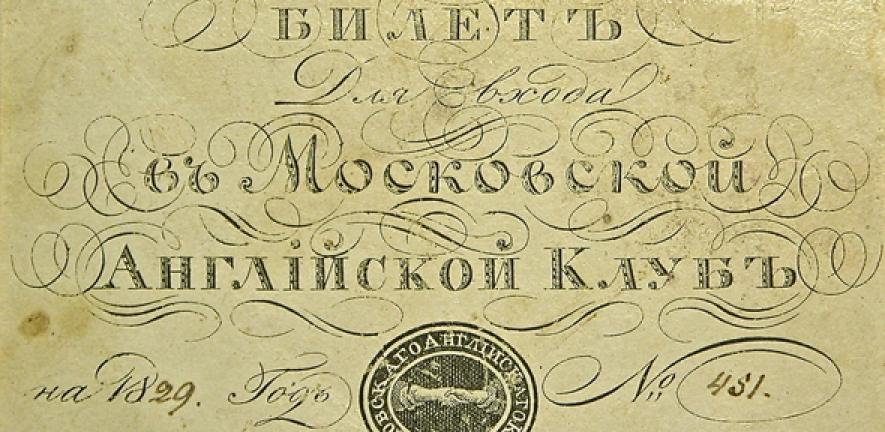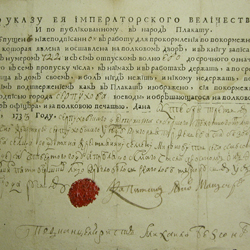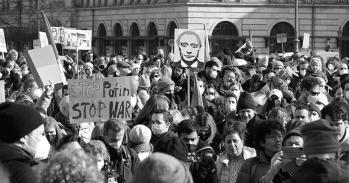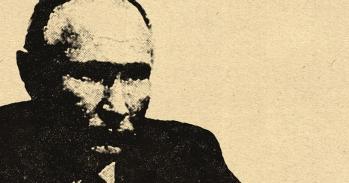
It may be a modern term, but information technology is as old as civilisation itself, and its impact on past societies was often just as profound. An ambitious project is tracing how such innovations created a complex graphic environment in Russia, during an earlier information age.
It may be a modern term, but information technology is as old as civilisation itself, and its impact on past societies was often just as profound. An ambitious project is tracing how such innovations created a complex graphic environment in Russia, during an earlier information age.
Writing in itself is the most extraordinary technology. It separates the message from the messenger, and makes the word an object
Professor Simon Franklin
Cultural historians are hardly strangers to niche interests, but it’s difficult, at first glance, to understand why anyone would want to study the history of printed blank forms. Nevertheless, part of Professor Simon Franklin’s recent research has focused on just that – or more specifically, on printed blank forms in Russia, up to the mid-19th century. So comprehensive has his investigation been that Russia now has its own early chronology of printed blank forms.
‘Why?’ seems an obvious question. “The printed blank form is one of the great innovations of civilisation,” Franklin asserted. “It’s interactive – a fixed template, with variable components. Spreading in Western Europe from the late 15th century, in Russia from a couple of hundred years later, they became essential in administration and commerce. They are the direct precursors of most kinds of online transaction today.”
As an historical source, the importance of the form is not the thing in itself, but the fact that it existed, the ideas it represented, and how it was used. Consider passports, for example. At face value, this particular ‘interactive template’ appears to be a means of crossing a border, although it is also both a mark of national identity and a symbol of state control. In Russia, however, it also had a more particular meaning. Although late to adopt print in general, Russia was the first European country to make it compulsory in regulating the movement of people within its own borders. The earliest mass distribution of printed blanks in Russia, from the 1720s, was passports for peasants.
Franklin sees such documents as examples of early modern information technologies, and his research into blank forms constitutes part of the groundwork for a much more expansive project, examining such technologies in Russia from 1450 to 1850. This initiative, which he is undertaking with Dr Katherine Bowers, aims to describe and analyse the emergence of a bewildering array of written materials as they appeared in Russia over 400 years.

In an age when IT tends to refer to computers and telecommunications, describing printed paper as information technology seems strange. In truth, both are part of a very long history. “Information technologies have been around for thousands of years,” Franklin said. “You can define them in all sorts of ways, but we are interested in devices through which information was encoded, recorded, stored, disseminated and retrieved.
“Writing in itself is the most extraordinary technology. It separates the message from the messenger, and makes the word an object. Before writing, information disappeared the moment it was uttered. Writing opened fundamentally new possibilities in the way people did business, governed, administered justice, communicated, worshipped, studied, even in the way they thought.”
In a similar vein, Franklin and Bowers intend to write a history of information technologies in relation to social and cultural change. To trace that across four centuries of Russian history is a huge undertaking; their sources come from places as diverse as monasteries, printing houses, libraries, archives and private collections.
Intriguingly, they are also interested in more than just written documents. The project covers every form of representation of words: coins and seals, engravings, monuments, inscriptions, embroidery, banknotes, shop signs – even graffiti. “The coach ticket or shop sign is just as relevant as the novel,” Franklin observed.
By analysing the functions of such technologies in affecting the relationships between people and things, the pair hope to reveal more about changes in societal relationships at this time. Just because most Russians were illiterate does not mean that they were unaffected by written material, and by the changing technologies of its production and display. The contents could be read aloud to them; and the texts and pictures became increasingly visible, part of their surroundings, as once-empty streets became cluttered with signs, posters, print-sellers, or printed decrees from the Tsar. To an extent, everyone lived in a graphic environment, in which information was being depicted in new ways. Franklin and Bowers want to understand more about this space – what Franklin refers to as “the graphosphere” – and what it meant for the people living in it.
This is, however, more than a study of change over four centuries; it is also a fundamental investigation into how societies adopt, perceive and respond to that change. Russian history in this sense is a foil to more-familiar, Western European conceptions of technology-driven progress. Franklin argues that it offers a case study in how technology unlocks contrasting cultural responses depending on where it is used, with the graphosphere becoming a “complex ecology” of new and old technological practices. “The idea that once technology arrives something specific follows is wrong,” he adds. “Something is enabled, certainly. But that’s only the beginning of the story.”
Roughly speaking the 1450–1850 span begins with the dawn of printing by moveable type in Europe, and ends with its mechanisation, and the spread of the electrical telegraph. Between these bookends, Franklin and Bowers can already cite numerous instances where information technologies affected Russian society in unpredictable ways, contrasting with Western Europe. For example, while printed German and Latin texts – especially Bibles – were used by scholars in Russia from the late 15th century, Russian printing itself did not begin until over half a century later, and then only intermittently and on a very small scale.
Until around 1700, almost all Russian printing was religious; and until the 19th century, almost all printing presses were owned or licensed by the State. This not only had consequences for the economics of printing (by contrast with the rapid proliferation of commercial printers in Western Europe), but also lent the technology itself an aura of official authority.

At the other end of the period, Bowers has looked at circulation and publication. Although by the 1800s one could be immortalised in print with relative ease, most Russian writers weren’t interested. For most, it was far more important to write for the sake of writing, for an audience of like-minded friends. Works were disseminated in handwritten letters and drafts, in albums, through recitation at literary salons. Modern editions of the poet Pushkin, for example, are necessarily littered with annotations so that readers can understand his often inscrutable in-jokes. “The poems were mostly meant for him and his friends,” said Bowers. “Until the mid-19th century, many Russian writers thought the idea of being published in print rather vulgar.”
Franklin ultimately perceives a link between this history and the modern IT age. Today, of course, we are also witnessing rapid technological changes, which transform the ways in which we spend money, our interactions with others, or the extent to which we trust our governments.
As with the comparison between Russia and Western Europe, modern cultures are no less divergent in the meanings they confer on such innovations. Young people in the West are likely to attribute a very different importance to social media compared with people who used those platforms to spread their messages during the Arab Spring.
“This is about dialogue between the study of the present and the study of the past,” Franklin observed. “One of the motivations for this project is that, for questions thrown up by technology in the present, there are equivalent processes to be found in the past.” Perhaps more than other generations, we are well placed to perceive and understand the complicated history of the graphosphere, and of the relationship between information technologies, and society itself.
Inset Images from top: stamp from a 1715 decree of Peter the Great. Bottom: Peasant passport, 1733; St Petersburg Institute of History of the Russian Academy of Sciences
This work is licensed under a Creative Commons Licence. If you use this content on your site please link back to this page.





